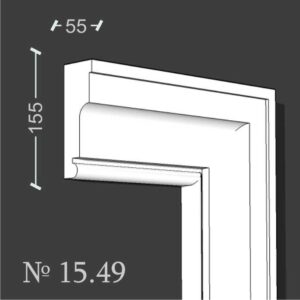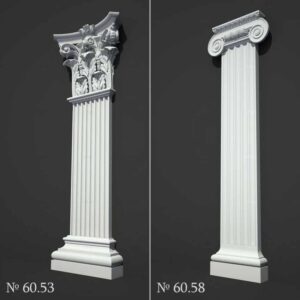A modest inground pool may provide you a great deal of happiness and relaxation, especially in the summer months. It does, however, also come with maintenance issues that, if not resolved right away, might reduce enjoyment and result in more serious, expensive issues.
Here, we explore eight common maintenance issues small inground pool owners face and provide practical tips on tackling them effectively.
1. Algae Growth
Algae growth can mar the pool’s appearance, turning the water from crystal clear to shades of green, yellow, or black. This issue affects the pool’s aesthetics and can make the water unsafe for swimmers. Combatting algae begins with regular and thorough cleaning, including brushing the pool walls and floor and vacuuming.
Maintaining proper chemical balance is critical; ensure chlorine levels are within the recommended range, and consider using algaecides as a preventive measure. Shock treatments can also be effective in killing existing algae.
Still, these should be used according to your pool’s specific needs and with caution, as overuse can disrupt the water’s chemical balance. Adding a small inground pool cover when the pool is not in use can prevent sunlight from fueling algae growth, making it a worthwhile investment for long-term maintenance.
2. Beam Cracks
Beam cracks refer to structural cracks along the pool’s edges or within the supportive beams that frame the small inground pool. These cracks are more than just cosmetic issues; they can signify deeper structural problems that may compromise the pool’s integrity and safety. Causes of beam cracks often include ground movement, improper construction, or normal wear and tear over time.
To address beam cracks, it’s essential to assess the extent of the damage initially. Minor cracks can sometimes be filled with a specialized sealant designed for underwater use. However, significant cracking or any sign of the crack affecting the pool’s structure requires professional assessment and repair.
Ignoring these warnings could lead to water leakage, further structural damage, or even the pool’s failure. Regular inspections for signs of cracking and timely repairs are crucial in preventing minor issues from becoming major problems.
3. Clogged Filters
Clogged filters are a common problem for small inground pool owners, affecting the clarity and quality of the pool water. Filters trapped with debris, leaves, or dirt can significantly reduce the efficiency of the pool’s filtration system, leading to cloudy water and potentially causing the pump to overwork and fail prematurely.
Regular inspection and cleaning are essential to prevent and address clogged filters. Cartridge filters should be removed and washed thoroughly with a hose, while sand and diatomaceous earth (DE) filters may require backwashing and replenishing with fresh DE powder in the case of DE filters.
If clogged filters persist, it is also advisable to consider pool leak detection services, as this may indicate a more significant issue, such as water loss from cracks or leaks in the pool’s plumbing system. Proper cleaning maintenance and prompt repairs can prolong the lifespan of your pool’s filters and improve overall water quality.
4. pH Imbalance
You must keep your small inground pool’s pH level correct. It is vital for swimmer comfort, water clarity, and pool longevity. The ideal pH for pool water is between 7.2 and 7.6.
When the pH strays outside this range, it can cause problems. These include skin and eye irritation for swimmers, corrosion of pool equipment, and poor chlorine performance. These issues harm the pool’s ability to stay clean and clear of harmful bacteria and algae.
Regular testing of pool water is indispensable to managing pH imbalance. Pool owners should test the water at least once a week using pH testing strips or a digital pH meter. If the pH is too high, adding a pH reducer (such as muriatic acid or sodium bisulfate) can bring it down.
Conversely, a pH increase (like sodium carbonate or soda ash) can raise it if the pH is too low. It’s crucial to follow the maker’s instructions for these chemicals. This is to avoid going past the desired pH range.
Balanced alkalinity stabilizes the pH. This makes keeping the ideal conditions for a safe and refreshing swim easier.
5. Pool Stains
Pool stains are unsightly and can be challenging to remove if left unchecked for too long. These stains can result from many factors. These include the pool’s age, water chemistry imbalances, or metal particles that swimmers or cleaning equipment introduced.
Preventing and fixing pool stains requires regular, thorough cleaning. It also requires maintaining proper water chemistry and using stain removers as needed. For stubborn stains, it may be necessary to drain and acid wash the pool’s surface or enlist professional help.
6. Equipment Malfunction
Like any machinery, the equipment in a small inground pool can break. This can happen due to age, wear, or lousy maintenance. Common pool equipment that may require repair or replacement include the pump, motor, filter, and heater.
Regular inspections and servicing are crucial to ensure your pool’s equipment functions correctly. This includes checking for leaks, unusual noises, and signs of wear on parts like seals, o-rings, and belts. Promptly addressing any issues can prevent costly breakdowns and extend the lifespan of your pool’s equipment.
7. Water Leaks
Water leaks in a small inground pool are a big headache for owners. They cause significant water loss, structural damage, and costly repairs.
Finding a leak is hard. It may come from plumbing, cracks in the pool, or faulty equipment.
If you suspect a water leak in your pool, it’s essential to contact professional plumbing services immediately. Ignoring a leak can lead to more extensive damage and higher repair costs. Regular inspections and prompt repairs can help prevent leaks from occurring or catch them early on before they become significant issues.
8. Poor Water Circulation
Proper water circulation is essential for maintaining a clean and healthy pool. However, clogged filters and broken pumps can impede good flow. Inadequate skimming can do this, too. This can lead to cloudy water and other problems.
Regular maintenance is key. It includes cleaning or replacing the pool filter. This can prevent poor water flow.
Skimming and brushing the pool walls and floor also helps. It removes debris that may block proper circulation.
Maintaining Your Small Inground Pool
Owning a small inground pool requires regular maintenance, but with proactive care and prompt attention to any issues, you can keep your pool sparkling clean, safe for swimmers, and enjoyable for years. By understanding these common maintenance challenges and taking the necessary steps to address them, you can ensure your pool remains a source of relaxation and fun for you and your family.
Visit our website for more like this.













